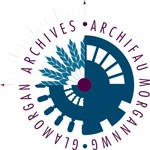
Glamorgan County Council was established under the Local Government Act 1888 and assumed its full responsibilities on 1 April 1889. Initially, the council took on a limited range of administrative functions which had previously fallen to Justices of the Peace. They also inherited the staff and office of the Justices. The Clerk of the Peace, Thomas Mansel Franklen, became Clerk to the County Council, whose headquarters remained at County Offices, Westgate Street, Cardiff – though a number of departments were based elsewhere. While some committee meetings could be held at County Offices, the building was not large enough for quarterly meetings of the full council and, for more than twenty years, these alternated between Gwyn Hall, Neath and Town Hall, Pontypridd.
With the passage of time, and growth in functions and staff, the council began to recognise the need for more suitable central offices, along with a permanent chamber for its own meetings. They first set up a committee to explore options in 1896 but more than a decade was to pass before the council reached a final decision.
The resolution appointing the 1896 committee stipulated that the chosen site ‘should be within the limits of the administrative county’. This effectively excluded Cardiff since, as a County Borough, it was outside the County Council’s jurisdiction. Sites were considered in Ely and Llandaff (neither of which fell within Cardiff’s boundaries at that time), Bridgend, Briton Ferry, Neath, Pontypridd, and Port Talbot. However, the County Council also received representations from Cardiff Corporation who were ‘anxious that these offices should be placed in the County Borough of Cardiff where the work of the County of Glamorgan has been carried on for many years’. The Corporation was in the process of purchasing Cathays Park from the Marquess of Bute and offered to discuss providing a site for county offices within the Park.
The committee clearly favoured Pontypridd, where a site could be acquired from Lady Llanover’s trustees in what is now Ynysangharad Park. However, this was resisted by a small majority of council members. The whole matter then seems to have been consigned to the back-burner, arising just occasionally in council meetings but without being brought to a substantive conclusion.
In 1903, a fresh committee was appointed to consider the council’s accommodation needs. The perceived suitability of Pontypridd again came to the fore when an attempt was made to restrict the committee’s consideration to sites in that town, but this was rejected. Instead, it was resolved that the location of the county offices be deferred until the committee’s report had been received.
In the event, the committee recommended that the County Council should decide between the Llanover site in Pontypridd (if satisfactory terms could be obtained), and a one acre site in Cathays Park, which Cardiff Corporation was prepared to sell for £3,000. The County Council considered the committee’s report on 25 April 1907 and resolved to proceed with the Cardiff site. Not surprisingly, this displeased Pontypridd Urban District Council, who decided to arrange a conference of Glamorgan’s Urban and Rural District Councils and non-County Boroughs, for the purpose of protesting against the offices being erected outside the administrative county. Clearly, though, that was to no avail.
A design competition attracted 190 entries and, in December 1908, it was announced that the winners were Vincent Harris and Thomas Anderson Moodie of London. On 30 October 1909, the building contract was awarded to Turner & Sons of Cardiff.
The County Council held its first meeting in the new council chamber on 14 March 1912. Members noted its defective acoustic properties. They also drew attention to the absence of Welsh emblems in the building and requested that both matters be rectified. His Majesty King George V was shortly due to visit Cardiff and the Council had hoped that he would open the building. This, though, appears not to have been possible. Instead, the minutes of the County Council meeting on 19 September 1912, briefly record that ‘The Chairman formally declared the Hall open and took the Chair’.
With further increases in local authority functions, more space was required and an extension, designed by Ivor Jones and Percy Thomas, was opened in 1932; this does not appear in Mary Traynor’s sketch. Local government re-organisation in 1974 saw County Hall inherited by Mid Glamorgan County Council – continuing the anomalous location of a council’s headquarters outside its area of jurisdiction. However, further re-structuring in 1996 left the building surplus to the new unitary authorities’ requirements. County Hall was acquired by Cardiff University, and re-named the Glamorgan Building.
From 1939, County Hall housed the Glamorgan Record Office, which remained there – even after its acquisition by the University – until the new Glamorgan Archives building, at Leckwith, opened in 2010.
David Webb, Glamorgan Archives Volunteer
Sources consulted:
- Mary Traynor Collection (ref.: D1093/1/6)
- Glamorgan County Council, minutes of council and committees (ref.: GC/CC/1/1-23)
- Glamorgan County Council, files about consideration of sites for County Hall (ref.: GD/C/BU/3-4)
- Pontypridd Urban District Council, minutes (ref.: UDPP/C/1/18)
- Matthews, John Hobson (ed): Records of the County Borough of Cardiff, Vol V, p 236
- The Jubilee of County Councils 1889-1939 – Glamorgan (ref.: Lib/R/25)
- South Wales Daily News, 29 May 1896
- Evening Express, 14 September, 16 October, & 17 December 1896
- Weekly Mail, 6 March 1897
- Evening Express, 18 Nov 1903
- Evening Express, 19 June 1907
- https://en.wikipedia.org/wiki/Glamorgan_Building



